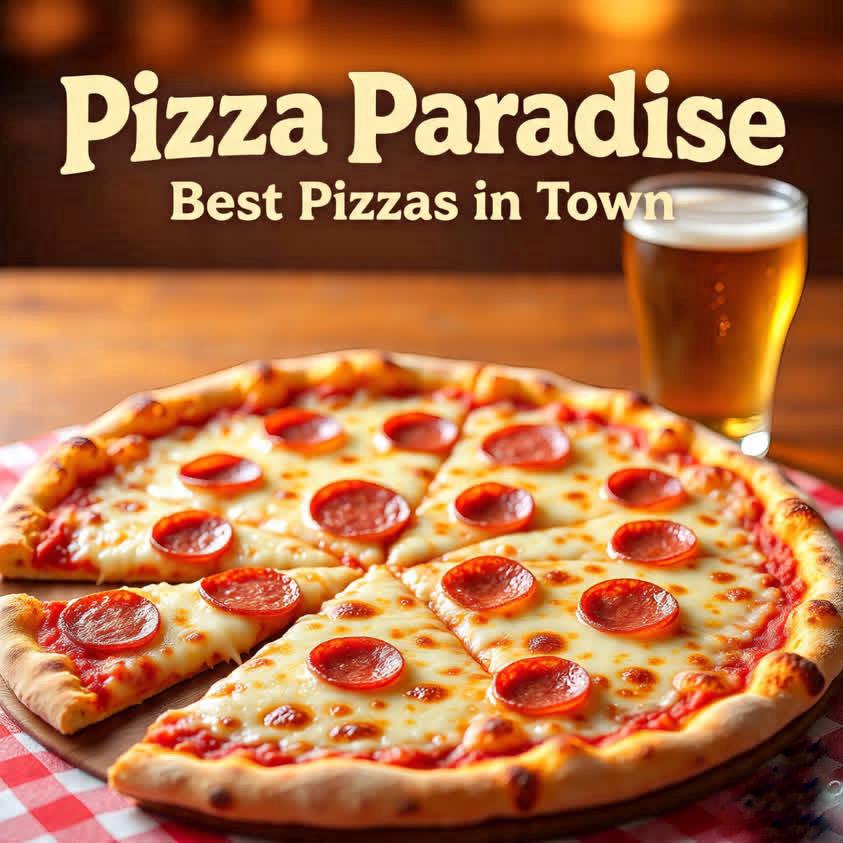I remember the first time I truly noticed how much pizza appears in movies and television shows. I was rewatching that famous scene from Home Alone where Kevin orders his cheese pizza, and it hit me that pizza was not just a prop or a convenient food choice. It had become something much bigger in our collective consciousness. Pizza is everywhere in popular culture, and when you start paying attention, you cannot unsee it. Discover how pizza became a pop culture icon through movies and TV shows, from Ninja Turtles to sitcoms.
The relationship between pizza and entertainment goes back decades, but somewhere along the way, this Italian dish became deeply woven into the fabric of American storytelling. You see it in romantic comedies when characters have late night conversations over a greasy box. You see it in action movies when heroes grab a slice between fighting bad guys. You see it in sitcoms as the default meal when nobody wants to cook. Pizza has transcended being just food. It has become a symbol, a shorthand for comfort, community, and casual living.
Think about the Teenage Mutant Ninja Turtles for a moment. These crime fighting reptiles could have been obsessed with any food, but the creators chose pizza. That choice was not random. Pizza represents fun, rebellion, and youth culture. The turtles lived in sewers and fought evil, but their love for pizza made them relatable. Kids everywhere suddenly wanted pizza even more because their favorite heroes ate it. The show aired in the late 1980s and early 1990s, and it cemented pizza as the ultimate cool kid food. I grew up during that era, and I can tell you that every birthday party had pizza, and we all argued about which turtle the best while was shoving slices into our mouths.
But pizza in popular culture extends far beyond children’s programming. Consider how often pizza appears in coming-of-age films and television shows. When teenage characters in movies want to hang out, where do they go? The pizza place. When college students in sitcoms need a break from studying, what do they order? Pizza. The food has become synonymous with youth, friendship, and those formative years when life feels both overwhelming and simple at the same time. I think about shows like Freaks and Geeks or movies like Fast Times at Ridgemont High, where pizza joints serve as gathering spots, neutral territories where different social groups intersect.
The cultural significance of pizza really shines through in how it appears during pivotal emotional moments on screen. When characters in dramas are going through difficult times, they often sit alone with a pizza box, eating directly from it without plates. This image communicates loneliness, depression, or the breaking of social norms. The pizza becomes a visual metaphor. We understand immediately that this character has given up on pretense. They are raw, vulnerable, and just trying to get through the day. I have noticed this trope in everything from prestige television to indie films, and it works because we all understand that feeling.
On the opposite end of the emotional spectrum, pizza represents celebration and togetherness. How many times have you watched a movie where a family shares pizza around a table, laughing and talking over each other? These scenes feel warm and authentic because they mirror real life. Pizza is democratic food. Everyone can find something they like on a pizza, and sharing it creates a sense of community. The act of dividing slices, arguing over toppings, and reaching across the table connects people. Television writers and film directors know this, so they use pizza to signal that characters are bonding or that a group is functioning as a unit.
The comedy genre has particularly embraced pizza as both prop and punchline. Think about The Office, where the infamous “Pizza by Alfredo versus Alfredo’s Pizza Cafe” debate became a memorable running gag. Or consider Parks and Recreation, where characters frequently gather at local pizza restaurants. These shows understand that pizza is inherently casual and unpretentious, which makes it perfect for comedy. Nobody is trying to impress anyone while eating pizza. The food strips away formality and allows humor to flourish.

Animated shows have also contributed significantly to pizza’s pop culture status. The Simpsons features countless pizza-eating scenes over its decades-long run. Family Guy, American Dad, and Bob’s Burgers all incorporate pizza restaurants and pizza consumption into their storytelling. Animation allows creators to exaggerate and play with food in ways that live-action cannot, and pizza’s visual appeal makes it ideal for animated comedy.
I would argue that pizza has become so embedded in popular culture that modern creators sometimes use it ironically or subversively. Some films and shows deliberately avoid pizza to signal that characters are sophisticated or different. Other productions lean heavily into pizza imagery to evoke nostalgia for the 1980s and 1990s, when pizza culture peaked in American consciousness. Either way, the presence or absence of pizza communicates meaning to audiences who have decades of media literacy around this particular food.
The truth is that pizza will probably continue dominating movies and television for years to come. It photographs well, it represents accessible pleasure, and audiences immediately understand what it signifies. When I watch new shows now, I catch myself smiling whenever pizza appears on screen, recognizing it as part of our shared cultural language. We all know what pizza means, even when nobody says a word about it.
Reference
Marino, M. P., & Crocco, M. S. (2015). Pizza: Teaching US history through food and place. The Social Studies, 106(3), 136–143. https://www.researchgate.net/publication/276907014
Ferry, J. (2003). Dinner and a movie: Analyzing food and film. Food, Culture & Society, 9(1), 49–67. https://doi.org/10.2752/155280106778055190
Kuppers, A. (2008). Sumptuous texts: Consuming ‘otherness’ in the food film genre. Critical Studies in Media Communication, 25(1), 68–90. https://doi.org/10.1080/15295030701849928

